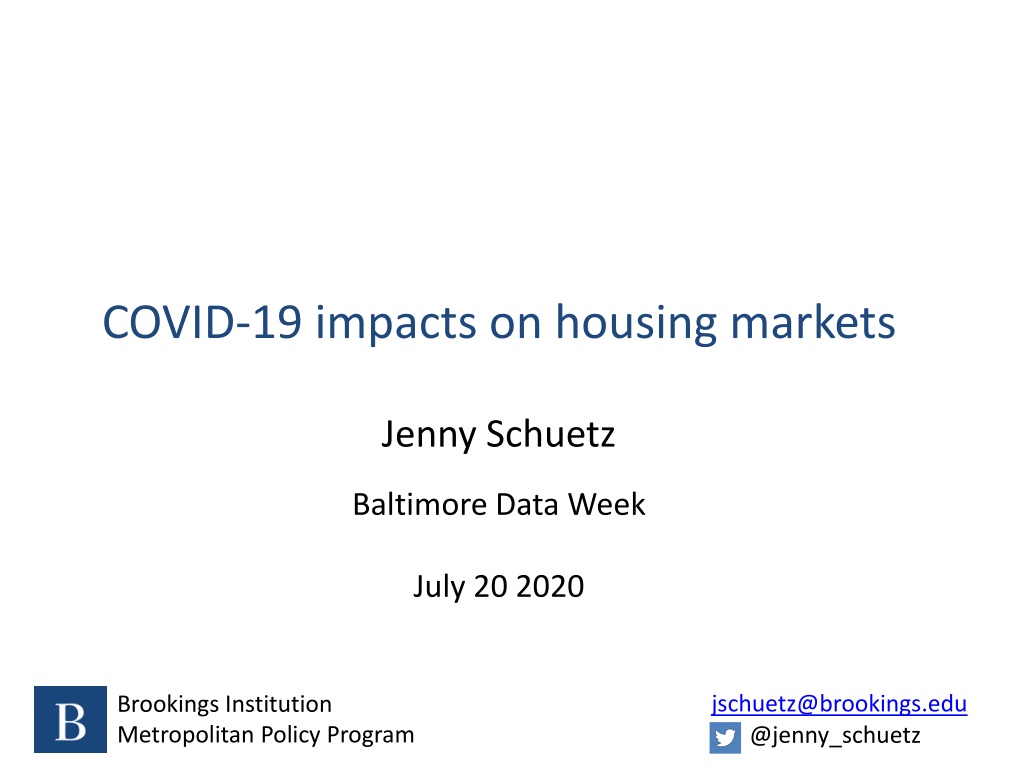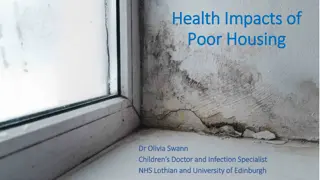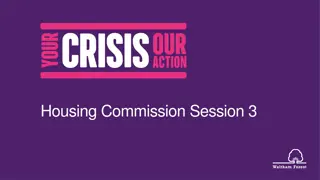COVID-19 Impacts on Housing Markets: Insights and Data
The COVID-19 pandemic and economic downturn have significantly affected household financial security, particularly impacting low-income, Black, and Latino workers. Policy responses like the Federal CARES Act provided some support but gaps remain, with a patchwork of state and local tenant protections in place. Real-time data on housing insecurity is limited, with new sources like the Census Bureau's Household Pulse Survey and NMHC Rent Payment Tracker shedding light on the challenges faced by renters and homeowners. Maryland renters, in particular, have shown concerns about their ability to pay rent or mortgage. Explore more data and insights to understand the evolving housing landscape amidst the pandemic.
Download Presentation

Please find below an Image/Link to download the presentation.
The content on the website is provided AS IS for your information and personal use only. It may not be sold, licensed, or shared on other websites without obtaining consent from the author. Download presentation by click this link. If you encounter any issues during the download, it is possible that the publisher has removed the file from their server.
E N D
Presentation Transcript
COVID-19 impacts on housing markets Jenny Schuetz Baltimore Data Week July 20 2020 jschuetz@brookings.edu @jenny_schuetz Brookings Institution Metropolitan Policy Program
COVID-19 impacts on housing security Pandemic and economic recession have severely hurt household financial security More than 10 million households spent over half their income on rent before pandemic Low-income, Black, & Latino workers have been hardest hit by job and income losses Policy responses to date Federal CARES Act includes some protections for homeowners & renters Income support in CARES Act was vital but not enough to cover households until economic recovery Patchwork of state & local tenant protections 2
Data sources on housing insecurity Housing markets have fewer real-time indicators than labor markets Most federal statistics lag by at least one month More info on owner-occupied than rental housing New data sources Census Bureau s Household Pulse Survey NMHC Rent Payment Tracker Federal Reserve Board s SHED supplemental survey 3
Census Household Pulse Survey https://www.census.gov/householdpulsedata 4
Housing insecurity among Maryland renters Maryland U.S. Survey question * Loss of employment income * Did not pay rent/mortgage this month * Slight or no confidence in ability to pay rent/mortgage next month Number of households (mi) Renters 48% 26% Owners 44% 9% Renters 46% 17% Owners 44% 6% 31% 1.4 13% 2.8 25% 74.7 10% 149.3 Source: Census Bureau Household Pulse Survey, Week 9 (June 25-June 30) 6
NMHC Renter Payment Tracker https://www.nmhc.org/research-insight/nmhc-rent-payment-tracker/ 7
Federal Reserve Board Economic Well-Being of US Households https://www.federalreserve.gov/publications/2020-economic-well-being-of-us-households-in-2019-financial- repercussions-from-covid-19.htm
Other metrics of housing insecurity Households respond to housing insecurity in many different ways. We don t have good data on many of these changes. Spend down savings to pay rent Use credit card or incur other short-term debt Negotiate payment plan with landlord Move in with family & friends Become homeless (sheltered & unsheltered) How will these show up in public statistical data? Administrative data? Other records? 9
Comments & questions welcome! jschuetz@brookings.edu 10























